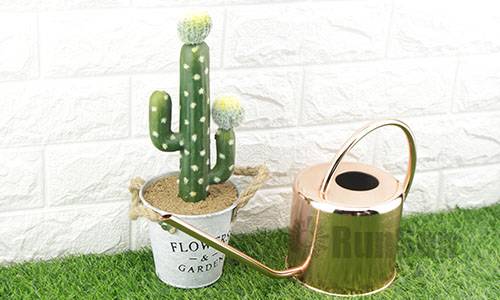

Are brass watering cans bad for plants? A small amount of copper is one of the micronutrients that are beneficial to plants.
However, it can cause many problems, especially iron deficiency. Signs of copper toxicity in indoor plants may include iron chlorosis – yellow leaves with green vein lines – or tip burn on leaves, as well as slow growth and dark, thick, short roots.
Many of these symptoms may also be caused by other causes, so before attributing plant problems, make sure there is a reason why your plants may be receiving too much copper.
Excessive use of copper fungicides
Although copper fungicides are often considered organic, this does not mean they are completely safe for all plants.
Avoid using them on copper-sensitive houseplants, geraniums (Geranium spp., USDA range 9 to 11), and ivy.
(Hedera spp., USDA zones ranging from 5 to 11). Young leaves are particularly sensitive to copper, so dilute the fungicide if the plants you intend to spray have a lot of new growth.
Corroding copper pipes
Corroding copper plumbing can pose a risk to both your health and the health of your plants. Signs of this corrosion often include blue-green stains on the bottom of sinks and tubs.
When checking water and plumbing, use bottled water or rainwater to irrigate plants.
Corroded copper spray pots or planters
Check the interior of copper spray pots or decorative planters for visible signs of turquoise color as well. Copper is often used for such containers because it corrodes more slowly than other metals, but that doesn’t mean it’s harmless.
It is usually best to use metal pots as storage pots rather than allowing them to come into contact with plant roots and soil.
Fixing copper overload
You can try to leach excess copper from plant-soil as long as these plants occupy containers with drainage holes.
To do this, pour water equal to twice the volume of that soil into the soil of each plant. A 6-inch pot will hold 10 cups of soil, so you will need to run 20 cups of water in it.
First, place the plants in a place where they can drain freely, such as outdoors or in a large sink or bathtub. Then pour the water in slowly enough so that it does not overflow from the pot.
A better solution is to soak the roots of the plants in a bucket of water first to remove the old plants, and then replace the soil with new potting soil for each plant.

